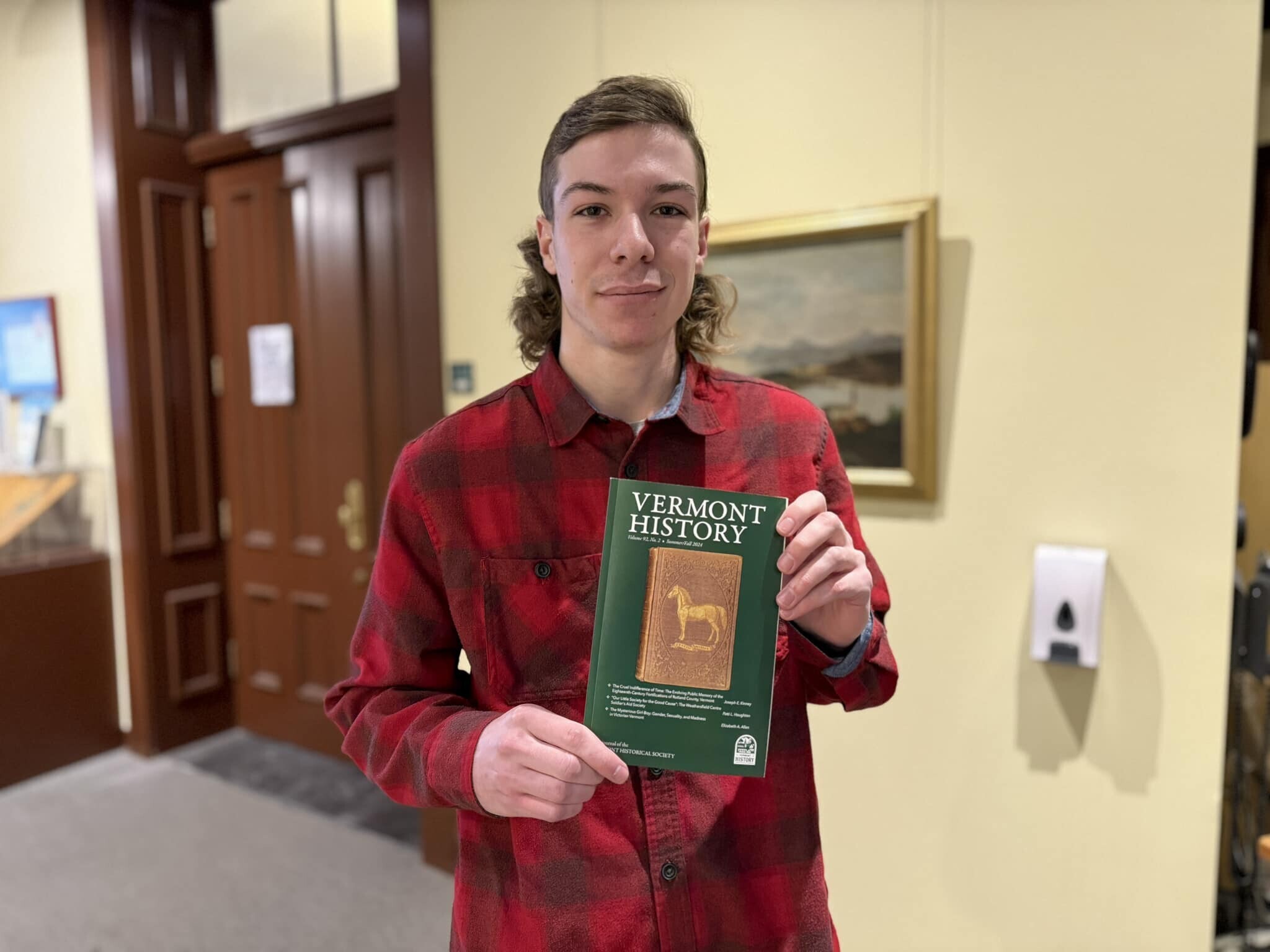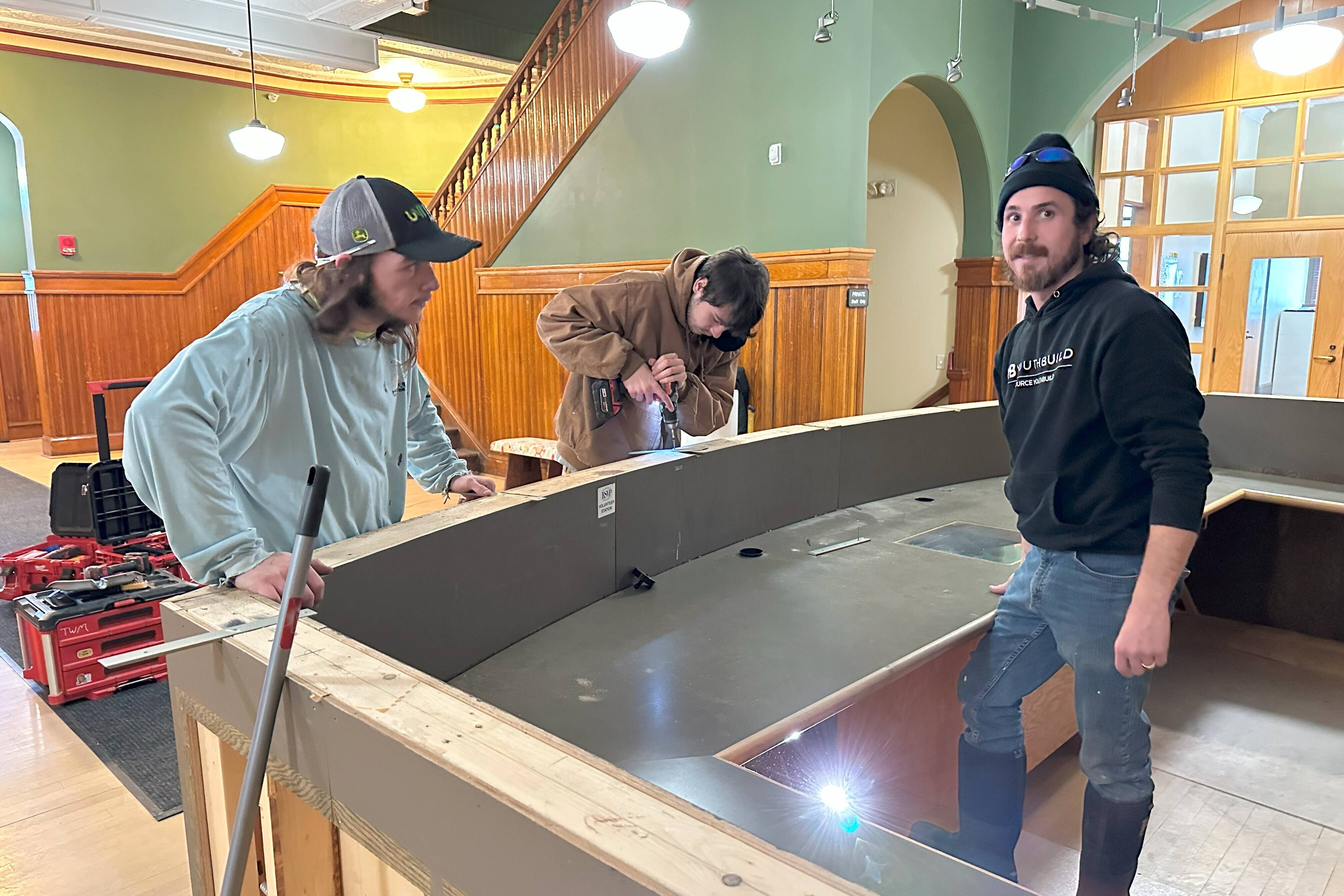Joseph E. Kinney on remembering Rutland's lost fortifications

In the latest issue of Vermont History, Joseph E. Kinney published his first scholarly paper: “The Cruel Indifference of Time: The Evolving Public Memory of the Eighteenth-Century Fortifications of Rutland County, Vermont,” in which he explores the story behind a series of fortifications that once stood in the Rutland area, and which were largely remembered through a series of community organizations.
He stopped by the Vermont History Museum in early January, and we had an opportunity to chat with him about his project and the paper that he wrote.
Can you introduce yourself and tell us a bit about how you came to write the paper that you’ve just published in Vermont History?
My name is Joseph Kinney, and I studied history at Castleton University (now Vermont State University Castleton.) I’m currently working on a master’s degree in Historical Archaeology from the University of Massachusetts Boston.
This article is derived from my history honors thesis, and was written with future publication in mind, and it underwent repeated review from my history honors committee. The topic came from my ever-persisting fascination with Castleton’s Fort Warren (1779), which I started researching in 2022 and later expanded my research focus to the other Rutland County forts.
In October of 2023, I discovered that the history of the forts did not end in 1782 when the Vermont troops were disbanded, and that their legacies (and evolution of said forts’ public memory) extended well into the twentieth century.
For those who might not have heard about them, what were these fortifications?
The Rutland County forts were, in general, wooden picket forts built by the citizens of their respective towns (with assistance from the Vermont militia at times) to defend against enemy incursions.
The “enemy” was the British, their allied Native warriors, and Tories. By 1779, several Vermont towns (like Castleton) had been harassed and raided by said enemies and the forts were built to defend against them. In fact, in 1779 the Vermont Board of War declared the north line of Castleton, the west and north lines of Pittsford to the Green Mountains to be the official military front between them and the enemy. Furthermore, they advised all who lived north of that line to move south where the state could better assure their safety.
How has their memory endured in the Rutland area?
The forts have fallen out of the public consciousness in the past few decades. Fort Warren has been all but destroyed by development, Fort Vengeance (Pittsford) is bypassed by a state highway, and Forts Rutland and Ranger (Rutland) are also built over with highway and cities. Little trace of their existence remains today.
All that is left are the several historic site markers erected by the DAR and State of Vermont over the years; however, they can be easily missed to the casual onlooker. For example, the maker for Fort Rutland (1775) can be found at the intersection of Main and Terrill Streets in Center Rutland, but is passed by hundreds daily. Likewise, the DAR marker for Fort Warren (1779) is concealed behind shrubs at a park-and-ride at the intersection of VT Rte 4A and East Hubbardton Road in Castleton. Fort Vengeance’s (1780) 1873 marker is a proud marble obelisk, but requires drivers on VT Route 7 to stop to read it, so it is often passed by without a second look.
This is in sharp contrast to as recently as the 1950s, when the forts were widely celebrated with reenactments, namesake businesses, and other public remembrance activities. This neglected history was the inspiration to write the article.
What types of sources did you end up using for this project, and how did your work help shed more light on this particular area of history?
After reviewing the historic and modern literature, I extensively relied on historic newspapers for my interpretation. Evidence of the several manifestations of the forts’ public memory—celebrations, reenactments, 4H clubs, and businesses—are all captured in historic newspapers, therefore they made up the bulk of my primary sources used in the article.
This sheds more light on the “second chapter,” if you will, of the forts’ history. For decades, historians have focused on the wartime significance of the forts, but in doing so overlooked the lasting legacies the forts had in the towns they defended. This phenomenon was not confined to Rutland County either, as both Fort Stanwix in New York and Fort Boonesborough in Kentucky experienced parallel manifestations of public memory, like historical markers erected by heritage organizations at the forts during the turn of the century and aspiring entrepreneurs using the forts as namesakes for their businesses later in the twentieth century.
What are you working on next?
I am currently continuing my studies on Castleton in the Revolutionary War and writing an article about the Skirmish of Castleton, which occurred one day before the Battle of Hubbardton on July 6, 1777. This was a brief yet consequential engagement between 15-20 Castleton and Halifax militiamen and a British raiding party numbering in to the tune of 100 raiders. It resulted in several Castleton residents being taken to Fort Ticonderoga as prisoners of war and the looting of their homes by the raiding party. Those captured escaped later in August 1777.
This skirmish has been noted by nineteenth-century historians but largely remains overlooked in discussions of Vermont’s Revolutionary War history. In the spirit of the upcoming 250th anniversary, I have been using primary sources recently made available by the National Archives—pension applications, post-war veteran interviews, and sworn affidavits—to retell the skirmish in the words of the veterans that experienced it.
This article is still a manuscript and I will be seeking a home for it in a journal when it is completed.
